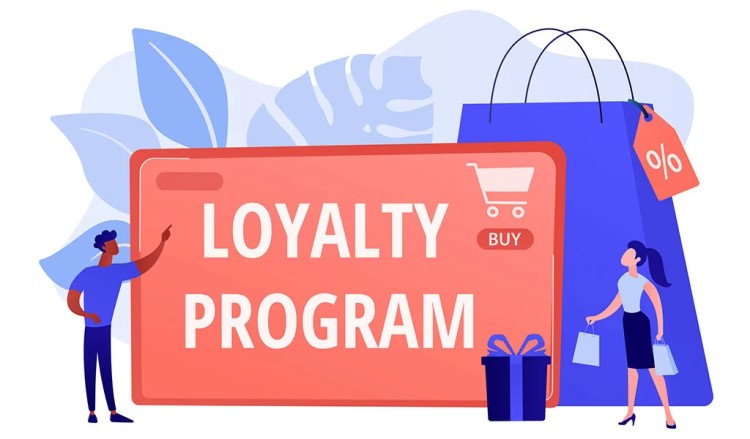
Understanding Your Customers’ Needs
Understanding your customers’ needs is a critical step in learning how to build a loyalty program that truly resonates. When you know your audience well, you can tailor rewards and incentives to match their preferences. This makes the program more appealing and encourages repeat purchases. If the rewards don’t align with what your customers value, they are less likely to engage with the program.
By gathering insights into buying habits and preferences, you can design a loyalty program that feels personalized. Customers appreciate when their loyalty is rewarded with things they actually want. This creates a stronger connection with your brand and keeps them coming back. Additionally, when the program feels relevant, it becomes a key part of their shopping experience.
Researching customer behavior and feedback is essential for success. The more you know about their motivations, the easier it is to create rewards that spark interest. Personalizing your loyalty program to meet your customers’ needs not only boosts engagement but also strengthens long-term loyalty. Learning how to build a loyalty program around customer needs can ultimately lead to increased sales and a stronger relationship with your audience.
Choosing the Right Rewards Structure
Choosing the right rewards structure is a key step when learning how to build a loyalty program that engages your customers. Different types of programs offer various benefits, so it’s important to select the one that fits your business model. For example, a points-based system rewards customers for every purchase. These points can be redeemed for discounts or free products, which encourages frequent buying.
Tier-based programs, on the other hand, offer rewards based on different levels of customer spending. As customers move up in tiers, they receive better rewards. This structure is ideal for businesses that want to build long-term loyalty and encourage higher spending. It creates a sense of exclusivity and motivates customers to reach the next level.
To select the best structure, consider your business goals and what motivates your customers. If your audience values simplicity, a straightforward points system might work best. If they enjoy competition or exclusive perks, a tier-based system may be more engaging. Understanding these factors will help you decide how to build a loyalty program that keeps your customers coming back.
Incorporating Personalized Offers
Incorporating personalized offers into your loyalty program can significantly boost engagement and drive repeat purchases. When rewards and experiences feel tailored to individual customers, they are more likely to participate actively. Personalization shows customers you understand their preferences, which strengthens their connection to your brand. Learning how to build a loyalty program with personalized elements can make your program stand out.
Personalized rewards can include birthday discounts, exclusive access to new products, or special offers based on past purchases. This approach makes customers feel valued, increasing their likelihood to return. Personalizing rewards also creates a unique experience that motivates repeat purchases, helping you build lasting relationships.
To personalize effectively, gather data on customer behavior and preferences. This information allows you to create offers that match individual needs. By focusing on personalization, you can learn how to build a loyalty program that not only encourages repeat purchases but also fosters stronger customer loyalty over time.
Leveraging Technology for Program Management
Leveraging technology is essential for efficiently managing loyalty programs and improving customer experiences. Digital tools and apps can automate various aspects of loyalty programs, from tracking points to delivering personalized rewards. When you explore how to build a loyalty program, integrating technology ensures smooth operations and provides a seamless experience for customers.
Mobile apps, for instance, allow customers to easily check their points balance, redeem rewards, and receive special offers in real time. These platforms also help businesses collect valuable data, which can be used to refine the program and create more targeted promotions. This not only enhances customer engagement but also reduces manual tasks, making it easier to manage the program.
Using technology also allows you to scale your loyalty program efficiently. Whether your business is small or large, digital platforms provide the flexibility needed to handle a growing customer base. By embracing digital tools, you can learn how to build a loyalty program that is not only convenient for your customers but also optimized for long-term success.
Promoting Your Loyalty Program Effectively
Promoting your loyalty program effectively is key to maximizing enrollment and participation. One of the most important steps in how to build a loyalty program is ensuring your target audience knows about it. Clear, compelling messaging and multiple marketing channels help spread awareness and drive interest in joining.
Use your existing customer communication channels to promote your program. Send email campaigns, post about it on social media, and display it prominently on your website. In-store signage or personalized invites during checkout can also encourage sign-ups. The goal is to make customers aware of the program’s benefits and how easily they can join.
Another important strategy is offering immediate rewards or incentives for enrolling. For example, you might offer a discount or bonus points upon sign-up to attract more participants. This type of promotion boosts initial engagement and creates excitement around the program. By following these tips, you’ll learn how to build a loyalty program that captures attention and keeps customers engaged long-term.
Measuring Success and Making Adjustments
Measuring the success of your loyalty program is essential in understanding its impact on sales and customer retention. When learning how to build a loyalty program, tracking key metrics like customer engagement, repeat purchases, and overall sales growth will help gauge its effectiveness. Regularly monitoring these indicators allows you to see if your program is driving the results you want.
Data-driven insights are critical for making necessary adjustments. For example, if you notice low participation rates, you may need to reassess your rewards structure or improve how you promote the program. Similarly, analyzing which rewards lead to repeat purchases can help fine-tune your offerings, making them more attractive to your customers.
Continuously improving your program ensures it stays relevant and effective over time. By focusing on key metrics and being open to making changes, you’ll understand how to build a loyalty program that consistently supports your business goals and boosts customer loyalty.
Conclusion
Building an effective loyalty program requires careful planning, thoughtful reward structures, and continuous adjustments. By understanding how to build a loyalty program tailored to your customers’ needs, you’ll enhance engagement and drive sales. Focus on personalization, utilize technology for management, and track key performance metrics to ensure lasting success. Remember, a successful program adapts and evolves, keeping customers loyal and boosting business growth. Following these steps will guide you in learning how to build a loyalty program that benefits both you and your customers.


